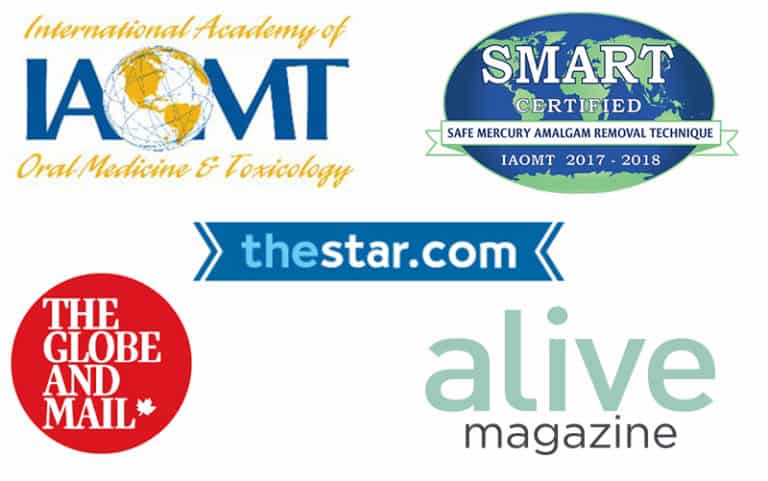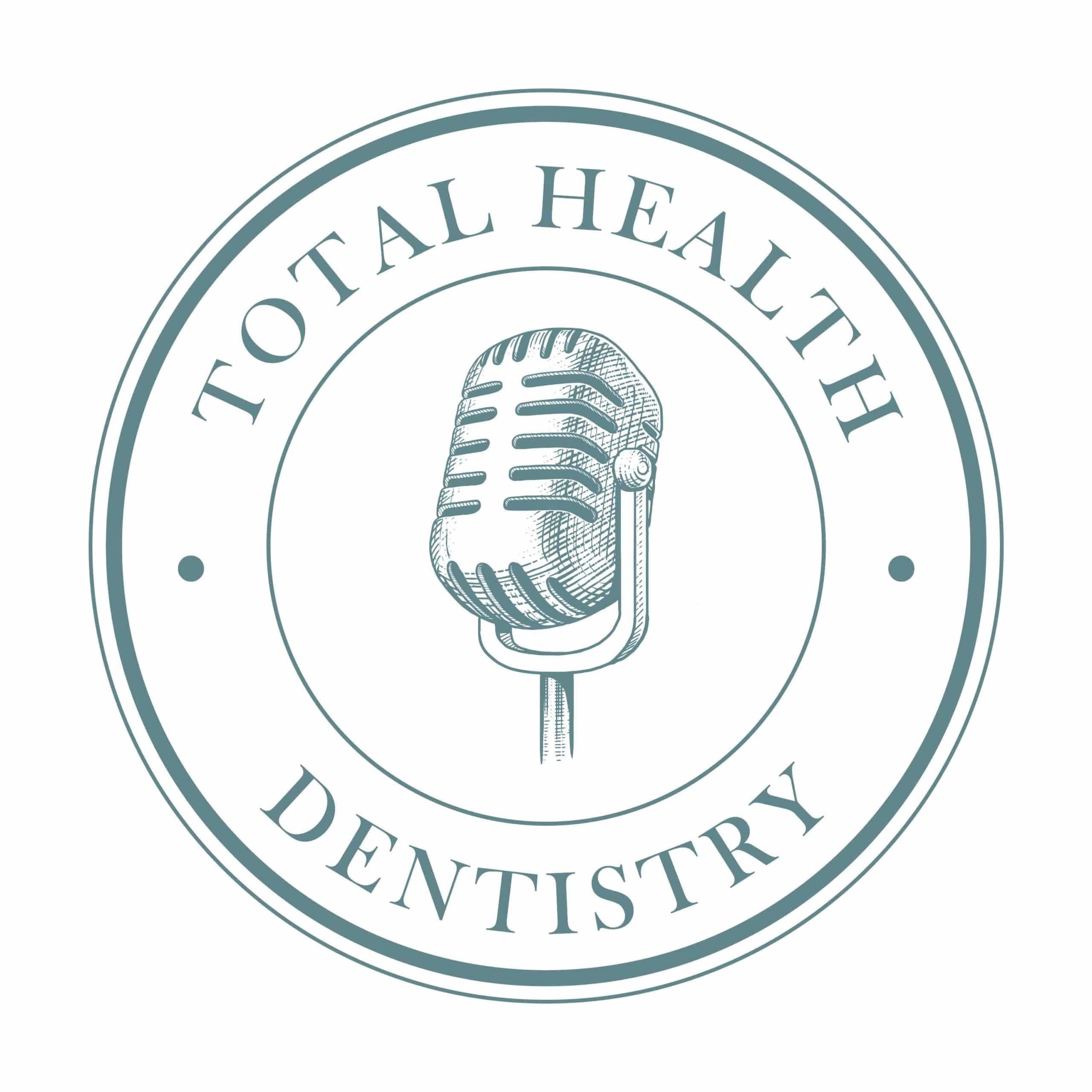
The Mid-Life Years - part 2
Ep. 27 : Total Health Dentistry with Dr. Ali
Listen:
Dr. Ali
- Featured in publications such as Alive Magazine, The Globe and Mail, and The Toronto Star
- Sought by hundreds of Naturopathic Doctors across Ontario
- Planning guest lectures on his approach to Total Health Dentistry along with world-renowned Dr. Thomas Rau MD.

Reviews for Dr. Ali








Mid-Life Years part 2
Discover the solutions to repair your teeth and jaw. Listen in as Dr. Ali discusses replacing silver/amalgam/mercury fillings. What to do about missing teeth. And more.
Discover all the options so you can make the right decisions…
Listen in as Dr. Ali discusses replacing silver/amalgam/mercury fillings, solutions for missing teeth and how to improve your smile and bite. In this re-release episode, you’ll discover all the options to improve your smile and your bite to help you make the right decisions for you…
Listen:
Read:
Click here for full Transcript
Intro:
In the first of its kind dentists-to-patient podcast, you’ll gain incredibly valuable insight into the mouth-body connection. You won’t hear any fluffy filler here. You’ll actually be able to connect the dots. Join us for a worthy jolt of insight on the Total Health Dentistry podcast with Dr. Ali.
Dr. Ali:
Hey everyone, it’s Dr. Ali. In this episode, you’ll gain a worthy jolt of insight about Total Health Dentistry for the Midlife Years part two. The last episode we focused on Total Health Dentistry for the Midlife Years part one. If you’ve missed the opening five part series which laid out the framework for what constitutes Total Health Dentistry for the Midlife Years part two. The last episode we focused on Total Health, make sure you go back and check out the first five episodes as it will give this episode and future ones greater context.
So in the last episode, we discussed how this age group is most likely to have gone through the “wars of dentistry”: mercury amalgam fillings, root canals, missing teeth, missing bone and gum, bad bites and altered facial architecture, just to name some of the common ones. In this episode, part two, we will discuss the great options and solutions we have available to us today.
As mentioned in the last podcast, since 2011 my Stratford, Ontario practice has been restricted to adults only and really only those adults who have been through a ton of dentistry. My patients have extensive dental issues and really need a comprehensive plan and ideally all done under one roof. So, what I’m about to share with you is from this perspective: however bad you think your dental situation is, I promise you I’ve seen and treated worse. I have documented most of the complex cases I’ve done. So, I have the photographs to prove that your situation isn’t as bad as you might think and there is actually great hope. So, let’s get to the solutions.
We talked about mercury amalgam fillings last episode. Well, what are some alternatives? So, you’ve made an informed decision to remove your mercury amalgam fillings. There are basically three alternatives to replace them with: plastic fillings, porcelain and gold. Remember, no fluffy stuff. We’re going to get right into the details.
Plastic fillings are an alternative to mercury amalgam fillings. There’s this great expression about jumping out of the pot and into the frying pan. There are dentists out there who feel that by replacing mercury amalgam fillings with plastic resin fillings, they’re just substituting one poison, mercury, for another poison, namely BPA, and other similar chemicals. Well, I’ve studied and thought about this a lot and I disagree with this contention. Here’s why.
There are two reasons why I don’t think that replacing an amalgam filling with a plastic filling is like jumping from the pot into a frying pan. Firstly, the potency of mercury versus BPA and secondly, the quantity of mercury versus BPA. Let’s dig into this a little bit.
Here’s a quick trivia question for you, Matt.
Matt: Okay.
Dr. Ali:
Which is more toxic to the nervous system, mercury, arsenic, lead or aluminum?
Matt: I’m going to guess arsenic.
Dr. Ali:
Yeah, absolutely. Most people, I think from that list would say arsenic. A lot of people would say lead, but in fact mercury is most toxic of these heavy metals. It’s even more than arsenic.
Matt: Wow.
Dr. Ali:
So, it’s simply classifying mercury as on par with BPA is simply not the case. Mercury is in a class of its own when it comes to potency as a poison. Now, I’m not saying BPA is good and fine, but it’s not a rival to mercury. So, that’s for the potency. In terms of quantity of mercury versus BPA, in 1991 the World Health Organization released the following data. It’s going to be surprised here.
Matt: Okay.
Dr. Ali:
The number one source of exposure of mercury in humans is through our mercury fillings.
Matt: Wow. Number one.
Dr. Ali:
Number one. That’s the World Health Organization, 1991. This isn’t new news, but anyway, the number one source of exposure to mercury in humans is through our mercury fillings.
Matt: Wow.
Dr. Ali:
We get roughly nine times more mercury from our fillings than from fish.
Matt: No way.
Dr. Ali: Way.
Matt: Oh my goodness.
Dr. Ali:
This is part of the Alive article that I wrote back in 2008 just kind of dispelling some of the myths, facts versus fiction. It’s not to say you have to make a decision one way or another. It’s just you have to get informed that these are facts.
Matt: Yeah.
Dr. Ali:
So, if a person does value reducing their mercury intake, and some do, some don’t. The most effective way is to address your mercury fillings, because that’s the number one source of mercury that you have. It’s not cutting back fish.
Matt: No. Exactly.
Dr. Ali:
Right. So, folks can go to iaomt.org amongst other places to get more information about … educate themselves further about this.
Now much BPA do we get from dentistry? Well, it turns out we get about one one-thousandth of our BPA exposure from dentistry. Put differently, we have 999 other sources of BPA, other than dentistry, that we can exposed to. Things like the insides of any coffee cup that you get, Tim Hortons, McDonald, the plastics, right?
Matt: Yep.
Dr. Ali:
Juices, anything that you buy as frozen, that’s inside of plastic containers. I mean we’re getting BPA from many, many, many other sources. Nine hundred and ninety-nine other ones and dentistry is one of them. Yet with mercury, our fillings are the number one source of mercury. So in terms of quantity of mercury versus BPA, it’s not even close.
Matt: No.
Dr. Ali:
So, I would contend that we are not jumping from the pot into the frying pan. Does that make sense?
Matt: Yeah, absolutely. Yeah.
Dr. Ali:
Now, I want to talk a little bit about BPA-free plastic resin fillings.
Many dental manufacturers jumped on the BPA-free marketing blitz a few years ago and they labelled some of their fillings as BPA-free. I was suspicious, so I dug into it. Not to get too technical, but here’s the scoop. BPA is created from other plastics once it is set and cured in the mouth with our dental light, seeing the dental light. So while the plastics are sitting in the containers in our offices, when they’re sitting on the shelf, they’re BPA-free.
Matt: Okay.
Dr. Ali:
Once they’re made in our patient’s mouth, then they have BPA because of the chemical reaction. So using this, manufacturers claim their fillings to be BPA-free. “Hey, we sold you BPA-free container of filling material.” It’s kind of like saying I want to avoid cooked eggs. Okay. I’m on a big kick on avoid cooked eggs and then the egg carton advertises that this carton is free of cooked eggs.
Matt: Yeah.
Dr. Ali:
Right? It’s true. This carton is free of cooked eggs.
Matt: Yeah. Yeah.
Dr. Ali:
So, that’s kind of how that is. Now, I personally use Admira Fusion from Voco. So, Admira Fusion from Voco, V-O-C-O. So, if you’re listening to this and you want to have this discussion with your dentist, please you may request this type of material from your dentist, Admira Fusion, and then there are other materials also that are BPA-free, but that’s the one that I use.
Okay. So biocompatibility aside, plastic fillings have one other major factor to consider, which is longevity.
Matt: Yep.
Dr. Ali:
So, here’s a question. How long is a good serviceable life of a mercury amalgam filling? Now, I’m going to get in trouble for saying this, but in fact, a good serviceable life of amalgam fillings is about six to eight years.
Matt: Really?
Dr. Ali:
Six to eight. Now, I know what some of you are thinking. “I had these fillings in here since the Cold War.” Well, that may be true, but what’s going on actually underneath those fillings? How many times have they cracked and been patched since they are put in? I assure you that 100% of them are rusted underneath.
Matt: Really?
Dr. Ali:
Yeah. Almost 100%. That to me it’s not the same thing as a serviceable filling. Any dentist will tell you we’ve got library of photographs showing rusting and corroding-
Matt: Can you taste that when it’s in your mouth? Can you taste that?
Dr. Ali: Of course. Some people can taste that.
Matt: Wow.
Dr. Ali:
Some people can taste that for sure. So back to plastic fillings, they actually have the same good serviceable longevity, say around six to eight years. Now these are averages, which of course means you get less, more, but a good rule of thumb is about six to eight years.
Matt: Wow.
Dr. Ali: Right? So, that’s something to consider.
Matt: Uh-hmm (affirmative).
Dr. Ali: Let’s switch to porcelain fillings.
Matt: Yep.
Dr. Ali:
Now if you notice, I didn’t use the word white fillings to describe the plastic resin fillings.
Matt: Yep.
Dr. Ali: Why is that? Well, because porcelain fillings are also white.
Matt: Yep.
Dr. Ali:
Now porcelain fillings are the most biocompatible filling material we have in dentistry today. Hands down. They’re made of ultra fine ground sand that’s made into ceramic. So, ceramic is a synonym for porcelain. Just for the biocompatibility alone, over the years I’ve had thousands of patients choose porcelain over plastic and gold to replace their mercury amalgam fillings. There is zero BPA in the porcelain fillings and they are beautiful and they are actually very protective of the teeth that haven’t gotten much enamel left. These porcelain fillings and crowns, they last about 15 years on average. Now they subsequently cost more for that reason. They’re made of a different material. So, a good analogy is kitchen countertops. Plastic fillings are like laminate countertops. They last, right? They hold well, but after six to eight years of wear and tear, they start to break apart.
Matt:
What are some of the signs of wear and tear? Say if someone has like a porcelain filling, like you said before, as some might rust and you get kind of like a taste in your mouth. What are some telltale signs for you that like porcelain filling or crown would be kind of on this way out?
Dr. Ali:
Great question. This is really what a dental checkup is about. Dentist will assess it and when the filling or crown is coming close to its age to be replaced, your dentist will advise you and show you maybe it’s an x-ray, they see cavity. Maybe it’s visually they inspect it, but essentially the seal is breaking down in some way, shape or form. The seal is breaking and then that’s how it’s time for that crown or filling to be replaced. So, yeah. Great question, Matt. So, plastic fillings are like laminate porcelain fillings or like granite. They’re different materials. Granite countertop and a laminate countertop are different countertops. They don’t cost the same. They don’t last the same. They’re different.
Matt: Yeah, absolutely.
Dr. Ali:
Last but not least is gold. The tried and true. I’m a big fan of gold in certain situations and I want to dismiss a few myths right off the bat. I’ve had so many questions over the years about the biocompatibility of gold because it is a metal, so let’s dig into this a bit. Briefly, metals come in three categories. There are toxic metals like we’ve talked about such as mercury and arsenic. There are beneficial metals such as iron, copper, and zinc. We actually need some metals in our body to function properly, and then there are neutral metals, ones that are neither toxic nor are they needed, and these would be metals like gold, silver and titanium.
So, gold fillings or crowns, they’re mixed with other metals like silver and platinum, and they can be very neutral and very biocompatible. One caution, for gold is that gold must not touch mercury amalgam fillings directly or ideally not even be in the same mouth. This is even written in the manufacturer’s blurb for mercury amalgam. Don’t touch gold, it says. Don’t let the gold and amalgam touch. It causes much more mercury to leach out.
Matt: Really?
Dr. Ali: Yes.
Matt: Wow.
Dr. Ali: Because of the dissimilar metals.
Matt: Yeah. So, even in the same mouth, even if they’re not touching.
Dr. Ali: Correct.
Matt: They just shouldn’t. Wow.
Dr. Ali: It’s not as bad when in the same mouth, but ideally they shouldn’t be touching. Gold shouldn’t be touching another metal of any kind in the mouth, but in a mouth that is free of other metals, okay, this is where the myth is. In a mouth that doesn’t have any other metals, that’s full of plastic fillings, porcelain fillings, et cetera, then just having gold fillings is very, very biocompatible.
Matt:
What about for people who once they’d have braces, you get the permanent retainer into your mouth? You know what I mean? With the wire. Should that still be avoided if you’re getting gold? I’m assuming it’s still metal, right?
Dr. Ali:
Yes, but then metals that are coming out of that wire and the metals are coming out of the gold are not harmful metals, by and large.
Matt: Yeah.
Dr. Ali:
Right. The retainer wire isn’t full of mercury, lead, aluminum, et cetera. It’s got stainless steel or it’s got maybe some nickel in it, but overall …
Matt: It’s not as harmful, right?
Dr. Ali:
Not nearly. No. Harmful or not harmful, that’s a judgment that we’re not making here. What we’re really talking about, if you notice I actually haven’t said anything about harmful. I’ve talked about the toxicity of mercury, the poison of mercury. Those are facts we know. How it’s harming an individual, that’s a completely different question. That actually is not a dental question.
Matt: Yeah.
Dr. Ali: I’m glad you asked the facts.
Matt: It’s good. We’re just sharing the difference, right? Exactly.
Dr. Ali:
It’s a medical question. Of course, we’re not medical doctors. We are dentists and we’re trying to just make educated choices about what materials we have in our mouth.
Matt: Yeah.
Dr. Ali:
Now, gold has one major advantage over all the other dental materials. It lasts and lasts and lasts. I’ve seen gold fillings and crowns last 40 years.
Matt: Wow. Really?
Dr. Ali: Yes. 100%, not just once.
Matt: It’s a big difference than the eight to six like you talked about, right?
Dr. Ali: Huge.
Matt: Yeah.
Dr. Ali:
Now, porcelain fillings were about 15. I don’t know if I maybe forgot to mention that, but porcelain fillings are roughly on about 15 years, and then gold can go all the way up to say 30, 40 years.
Matt: Wow.
Dr. Ali:
No other filling material we have has a chance to get to that. Okay? Now gold has a unique set of properties that makes it malleable and durable. Like gold jewelry, it holds up to just about anything.
Matt: Yep.
Dr. Ali:
One other compelling reason to use gold is, let’s say you’re in your 60s and you’re looking to have your mercury amalgam fillings replaced. Would you like this to be your last dental fillings ever?
Matt: Yeah.
Dr. Ali: Well, if so, then really the only chance you have at that is gold.
Matt: Uh-hmm (affirmative).
Dr. Ali:
It’s not a guarantee, but it is a real possibility that if you’re in your 60s and you want to maybe never touch this tooth again, gold is the only material that has a good chance to achieve this.
So, my patients know me as a pretty common sense, realistic dentist. So, here’s my approach as to what filling material would be maybe best to use. First question is, how big is the mercury amalgam filling we’re replacing? Is it less than half of the tooth or is it more than half of the tooth? If it’s small and less than half the tooth, you have lots of enamel left. All three options will work really well. Plastic fillings will hold up nicely. Porcelain or gold of course will serve very well and last many, many more years than six to eight years.
Now, if the filling is more than half the tooth and there’s not much enamel left, then plastic fillings just won’t hold up very well over time and you’re unlikely to even get the six to eight years. This is where porcelain and gold filling, gold crowns come in. They’re more durable. They hold up much, much better. It’s like countertops again. If you are a chef and doing tons of cutting and food prep on your countertops, if you use laminate, you’re going to go through your laminate countertops fast.
Matt: Oh yeah. That’s a really good analogy. Yeah.
Dr. Ali:
If you use granite or butcher block countertops or something, well then they’re going to hold up much better and much longer because the needs are much higher. So, you’ll replace your counters less often. Of course, the costs are different for these materials. So, that’s kind of my common sense approach to the alternatives for mercury amalgam fillings, plastic porcelain, and gold.
Let’s shift our attention to root canals. So, let’s say you’ve had a root canal that isn’t doing very well. One way or another, it’s sore or tender or just doesn’t feel right. Maybe it has a pocket of infection in the jaw bone, maybe it has a hidden crack in the root. You review all your options, you speak to your dentist and you make an informed decision to have the root canal removed. I actually did exactly that for one of my own teeth. I didn’t extract my own tooth. I had a colleague do it, but it had a root canal and it was showing a pocket of infection in the jaw bone, and I don’t take these “little pockets of infection” lightly.
Matt: Yeah.
Dr. Ali:
I could see it in the x-ray. This meant there was infection in my blood going into and out of my heart three times a minute in my brain. So if you have infection, that little pocket, that “little pocket of infection” that’s infection. It was in my jaw bone, which meant it was in my blood supply. My blood happens to go through my heart three times a minute, goes into my brain three times a minute. That just doesn’t work for me and my health outlook. You know?
Matt: Yep.
Dr. Ali:
So, I made an informed decision and I decided to have the tooth pulled. Now, what did I do after the tooth was pulled? Let’s look at some alternatives.
Matt: Yeah.
Dr. Ali:
Well, the first option is to do nothing. Just leave a gap. Right? Don’t replace the tooth at all. No one has died from ever having a missing tooth, but people have died from an infected tooth that wasn’t treated. Okay? So, you can always pull a tooth and leave a gap. Now, as discussed, there are disadvantages of doing that. You’ll lose jaw bone, your teeth will tip messing up your bite, but that’s the basic option. Don’t replace the pulled tooth at all.
Then you can decide, “Well, I do want to replace the tooth.” The first way you can replace a tooth is with a partial denture. Now, you may or may not have seen somebody with a partial denture, but typically they have metal hooks around some of the teeth. They come in and out. They have plastic teeth, and then they have pink gums.
Matt: So, it’d be like something like say like a hockey player uses, right?
Dr. Ali: Correct.
Matt: Just kind of snaps in. Yeah. Yeah.
Dr. Ali:
Correct. So, the advantages of that are it’s the most economical way to replace a tooth. There are fairly significant disadvantages. You continue to lose jaw bone where the tooth is gone. So, underneath the denture, your jaw bone is disintegrating.
Matt: Yeah.
Dr. Ali:
You can get more cavities and have more gum problems. Because think about it, if you have a sandwich right now, you’re going to get some food in and around your teeth, put something foreign around your mouth, then have a sandwich and you’re going to get way more food and things stuck in and around all the little crevices. So statistically, you just more chance of getting cavities and gum issues. There was a big study that was done, it was published in the Journal of the Canadian Dental Association a few years ago, and 50% of the teeth the hooks are holding onto, after the denture has been there for eight years, half of those teeth are gone. So, let’s say you have four teeth holding on to the denture, four of them, in eight years, statistically half of those teeth are gone so you have two teeth left.
Matt: Oh my goodness. So, you’d have to get more.
Dr. Ali:
You’d have to get more. Your denture just grows and grows and grows.
Matt: Wow.
Dr. Ali:
Another alternative, there’s a bridge. A bridge is where we trim down a tooth on either side of missing tooth and then we put crowns on the two teeth on either side and we bridge the two crowns with a false tooth.
Matt: Yep.
Dr. Ali:
So, you got two teeth on either side of a gap, cap the one behind, cap the one in front, and then you bridge over that missing tooth all in one piece.
Matt: Okay.
Dr. Ali:
The advantages of a bridge are that it’s fixed. It’s cemented in. It doesn’t come in and out. It’s quite nice that way. The disadvantage is that you still lose bone because there’s nothing in the jaw. You’re still losing bone underneath there. The life of the bridge depends on the teeth holding the bridge.
Matt: Yeah. Makes sense.
Dr. Ali:
Right? It’s a little hard to clean actually, especially if you’re in the back of the mouth. Drilling on two teeth to replace one, I mean that’s a disadvantage.
Matt: Yeah.
Dr. Ali:
Right? If you’re missing one tooth, you’d like to replace that one tooth and not have to drill in two other teeth.
Then the final alternative is a dental implant.
Matt: Yep.
Dr. Ali:
The advantages of a dental implant is that … well actually, it has all the advantages corresponding to the other disadvantages of a partial denture and bridge. So, an implant will preserve one’s jaw bone from deteriorating. An implant doesn’t hook onto or require drilling on the other teeth. If something happens to the implant, it doesn’t affect the other teeth on either side. So, it’s really the most natural and realistic option we have for replacing a missing tooth or an infected root canal. The disadvantage of course is cost. It’s the most costly of the other replacement options.
Matt: Yeah.
Dr. Ali:
Now, since 2013 … I’m sorry. I’ve been placing metal-free ceramic dental implants. This is a very … kind of a cool thing for us to be able to offer this. I’m one of the first dentists in Canada to place these metal-free implants. So, it has given me significant experience and expertise in this area. I’ve done education trips to Switzerland, Germany, specifically for these all-ceramic implants. Just a short while after placing these metal-free implants, I could see the massive advantages of these implants. I quickly realized that this actually was the future of dental implants. That was 2013.
Now while many of my colleagues were on the fence and still are, very wary of these implants and I understand why, some dentists actually today don’t even think metal-free implants are even a thing. They actually don’t even think it exists, but I can assure you they do. In 2019, after six years of using these implants, I can assure you they work splendidly well. They actually work better than titanium in many aspects. Now all the major dental implant companies worldwide, they’re scrambling to get their own metal-free all-ceramic dental implant on the market. It’s really the future.
Matt: Wow. Yeah.
Dr. Ali:
I just wanted to finish up on implants talking about discount implants. From time to time, I’ll see some discount implant dental pricing advertised either online or in the newspaper or somewhere. You name the bargain basement price and I’ve seen it. Now, how could these few dentists charge so little while most dentists are charging much more for dental implants? It’s a fair question.
Matt: Yep.
Dr. Ali:
It all actually comes down to the parts and the pieces used. Firstly, if you don’t mind having a part of your body, your tooth, which is a part of your body, if you don’t mind having that replaced by finding a bargain basement company overseas, then yeah, no problem. You can have that. That option exists. I can find you that option, as can most other dentists. It’s not some unique opportunity. If you came to me and said, “I’ve got to have the cheapest bargain basement price you can find me, Ali, for an implant.” I can do that. I can try to source that for you.
Secondly, there’s a post that goes into the implant called an abutment and then there’s a crown and a screw connecting everything altogether. There’s a few pieces for an implant. All of this can be sourced overseas where we don’t have good control of which metals are being used. There have been cases where lead was used in discount dental crowns.
Matt: Really?
Dr. Ali:
I have a patient tell me that. They had a bridge. They got a really, really discounted bridge. They found out later on it was … I think Health Canada released that there were these metals, these lead … lead was found in certain crowns made by certain labs manufacturers. A patient came and I … she could not afford to replace it now because she’d already spent some money to get the first one done and now she couldn’t afford to get the lead out of the bridge. It was really heartbreaking. We found a solution for her, but …
Matt: It’s good.
Dr. Ali:
Anyway. So, if you’re okay with discount metals, used overtop the implant and the resulting low-level electrical galvanic current – remember we talked about metal, gold, not touching amalgam – there’s a battery current there. Same thing happens with an implant. If you’ve got your metal implant, you’ve got your abutment, you’ve got your screws and crowns. There are many, many different sort of metals there. There will be a low galvanic current that exists there. Again, if that’s not of any issue to you, you made that decision, no problem. I can provide that as well.
Matt: Yep.
Dr. Ali:
The real question is, do you want the cheapest materials embedded into your jaw bone? That’s something I can’t answer, but that’s something only you can answer.
Matt: Yeah.
Dr. Ali:
Join us next time for episode 14 which is part three of the Total Health Dentistry for the Midlife Years.
Legal:
Please note that Dr. Ali Farahani is a general dentist and that Total Health Dentistry is not a specialty of dentistry. While we make every effort to broadcast correct information, dentistry is a constantly changing science and art. One doctor may have a different way of doing things from another. Dr. Ali Farahani is simply presenting his views and opinions that will be as evidenced-based as possible. We welcome any comments, suggestions, or corrections of error.
Dr. Ali Farahani takes no money from drug or device companies. By listening to this podcast or reading this blog you agree not to use this podcast or blog as medical advice to treat any medical condition in either yourself or others, including, but not limited to patients that you are treating. Consult your own physician for any medical issues that you may be having. This entire disclaimer also applies to any guests or contributors to the podcast or blog. Under no circumstances shall Sante Family Dental, Dr. A. Farahani Dentistry Professional Corporation or Dr. Ali Farahani, or any of their employees, associates, or affiliates, any of the guests or contributors to the podcast or blog, be responsible for damages arising from use of this podcast or blog.
Mid-life part 1
Mid-life part 3
Reviews of Podcast





Subscribe to the Total Health Dentistry Podcast:
Or subscribe with your favorite app by using:
https://santefamilydental.ca/feed/podcast/
Podcast: Play in new window | Download | Embed














